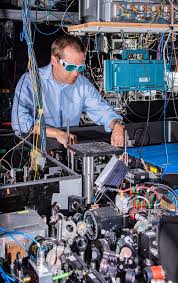
Breaking News
 James O'Keefe: My entire speech at AmericaFest 2025. We're not stopping. Join us to expose..
James O'Keefe: My entire speech at AmericaFest 2025. We're not stopping. Join us to expose..
 U.S. vs. Chinese Military Comparison – Focus on Asia-Taiwan Scenario
U.S. vs. Chinese Military Comparison – Focus on Asia-Taiwan Scenario
 DoJ Sues Four More States for Failing To Produce Voter-roll Data
DoJ Sues Four More States for Failing To Produce Voter-roll Data
 World's Largest Aviation Giant Abandons Google Over Security Concerns
World's Largest Aviation Giant Abandons Google Over Security Concerns
Top Tech News
 Perfect Aircrete, Kitchen Ingredients.
Perfect Aircrete, Kitchen Ingredients.
 Futuristic pixel-raising display lets you feel what's onscreen
Futuristic pixel-raising display lets you feel what's onscreen
 Cutting-Edge Facility Generates Pure Water and Hydrogen Fuel from Seawater for Mere Pennies
Cutting-Edge Facility Generates Pure Water and Hydrogen Fuel from Seawater for Mere Pennies
 This tiny dev board is packed with features for ambitious makers
This tiny dev board is packed with features for ambitious makers
 Scientists Discover Gel to Regrow Tooth Enamel
Scientists Discover Gel to Regrow Tooth Enamel
 Vitamin C and Dandelion Root Killing Cancer Cells -- as Former CDC Director Calls for COVID-19...
Vitamin C and Dandelion Root Killing Cancer Cells -- as Former CDC Director Calls for COVID-19...
 Galactic Brain: US firm plans space-based data centers, power grid to challenge China
Galactic Brain: US firm plans space-based data centers, power grid to challenge China
 A microbial cleanup for glyphosate just earned a patent. Here's why that matters
A microbial cleanup for glyphosate just earned a patent. Here's why that matters
 Japan Breaks Internet Speed Record with 5 Million Times Faster Data Transfer
Japan Breaks Internet Speed Record with 5 Million Times Faster Data Transfer
Record-breaking atomic clocks precise enough to measure spacetime distortions

In recent tests run by the National Institute of Standards and Technology (NIST), experimental atomic clocks have achieved record performance in three metrics, meaning these clocks could help measure the Earth's gravity more precisely or detect elusive dark matter.
The NIST clocks are made up of 1,000 ytterbium atoms, suspended in a grid of laser beams. These lasers "tick" trillions of times per second, which in turn cause the atoms to consistently flicker between two energy levels like a metronome. Measuring these allows atomic clocks to keep time incredibly precisely, in some cases losing only a single second over 300 million years.
But there's always room for improvement, in this case by adding thermal and electric shielding to the devices. By comparing two experimental atomic clocks, NIST scientists have now reported three new records in the devices at once: systematic uncertainty, stability and reproducibility.
Systematic uncertainty refers to how accurately the clock's ticks match the natural vibrations of the atoms inside it. According to the team, the atomic clocks were correct to within 1.4 errors in a quintillion (a 10 followed by 18 zeroes).
Stability is a measure of how much the clock's ticks change over time. In this case, the NIST clocks were stable to within 3.2 parts in 1019 (a 10 with 19 zeroes) over the course of a day.
And, finally, reproducibility is measured by comparing how well two atomic clocks remain in sync. Checking the two clocks 10 times, the team found that the difference in frequency of their ticking was within a quintillionth.

 Advanced Propulsion Resources Part 1 of 2
Advanced Propulsion Resources Part 1 of 2

